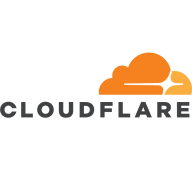


Microsoft Azure Application Gateway and FortiWeb Web Application Firewall (WAF) are products competing in web application protection. FortiWeb WAF seems to have an upper hand due to its advanced security features, which are deemed worth the higher investment.
Features: Microsoft Azure Application Gateway offers SSL offloading, path-based routing, and scalability. FortiWeb WAF provides advanced threat analysis, integrated machine learning, and strong DDoS protection. The main difference lies in FortiWeb's tailored security approach.
Room for Improvement: Microsoft Azure Application Gateway could improve on advanced threat detection, customization options, and reducing false positives. FortiWeb WAF might benefit from simpler deployment processes, a streamlined user interface, and more seamless integrations with third-party tools.
Ease of Deployment and Customer Service: FortiWeb WAF's deployment can be complex, but receives support from a dedicated team. Microsoft Azure Application Gateway offers a straightforward integration process and standard support, providing an easier deployment experience.
Pricing and ROI: Microsoft Azure Application Gateway is cost-effective with a quicker ROI due to lower initial costs. FortiWeb WAF, while requiring higher upfront investment, is valued for long-term security benefits, achieving satisfactory ROI for robust protection.
WordPress security can be tricky, and that's where Cloudflare can be absolutely helpful for small businesses.
For the small project I was working on, using the basic tier provided a huge improvement at zero cost.
In terms of return on investment with Cloudflare, it costs my time to set them up, but basically once they're set up, it's done.
Microsoft Azure Application Gateway significantly impacts our cost savings while maintaining higher performance.
We have seen a return on investment in terms of time-saving and cost-saving by not creating our own infrastructure.
This would help us address issues promptly, especially during unforeseen events like DDoS attacks.
Cloudflare does not offer hands-on technical support to fix customer problems but rather a self-service model.
The key factor is the language in which the support is offered, which, in this case, is in Thai.
Their support is truly exceptional when I compare it with similar large-sized companies.
The back-end development team is available, and if any issue arises, they will help us immediately by providing solutions when contacted.
There is room for improvement, specifically in paid support, by providing more direct contact.
I would rate Microsoft support as good because they have a very skilled technical support team in the background
It is a SaaS tool, but the fact that they have workloads deployed across the world proves that it is a highly scalable tool.
The tool offers very good performance, even during high-traffic periods.
I rate the solution’s scalability an eight out of ten.
Microsoft Azure Application Gateway is a very scalable product.
Microsoft Azure Application Gateway is a scalable solution.
For DDoS protection, I would not recommend Cloudflare.
I rate the solution’s stability an eight out of ten.
The service is very stable with no impacts during high-traffic periods.
The stability is good, and except for a few instances, I don't see the non-availability of Azure Cloud services.
There's a need for improvement in areas like AI-based DDoS attacks and Layer 7 WAF features.
Despite these challenges, overall, Cloudflare remains the preferred solution compared to Azure, AWS CloudFront, and Google Cloud Armor.
The timing aspect can lead to it being considered overpriced. This is a particular concern we have with Cloudflare, as they may struggle with accurately detecting the client.
If the GUI includes notifications and improved logging capabilities that allow us to see traffic and store logs for six months, that would be very helpful.
If some of my customers want to migrate from F5 to Fortinet Firewall, or the Fortinet WAF solution, there are some migration issues.
There is room for improvement in terms of support, such as assigning agents directly for more straightforward engagement.
In future releases of Microsoft Azure Application Gateway, I would like to see more AI functionalities and a better dashboard as well as some customizations.
Microsoft Azure Application Gateway has room for improvement because it offers many features, but its configuration is a bit difficult, at least from the developer point of view.
That's where Cloudflare shines for smaller businesses – it's ten times cheaper than Akamai.
I find it to be cheap.
I think they should consider reevaluating the pricing for support, as it can be quite high.
If the customer has multiple websites, the price reduces automatically because it depends on the number only.
Azure solutions are quite expensive.
When it comes to pricing for Microsoft Azure Application Gateway, I would rate it a seven out of ten.
The most valuable features of the solution are performance and security.
Techniques like minification and image compression reduce the size of assets, leading to better performance and faster user load times.
The solution has been able to compare it to the market, and I think the product has taken great strides in automating quite a bit of things, and they use a lot of AI.
Fortinet's pricing is way more competitive than Cisco or Palo Alto.
The features of FortiWeb Web Application Firewall (WAF) that have proven most effective in protecting web applications include web filtering, DDoS protection, geo-location blocking, and blocking SQL injection attacks.
We are using it for some of the security features for our applications, particularly for securing traffic in transit with SSL.
The Web Application Firewall (WAF) in Microsoft Azure Application Gateway has been very effective in protecting applications from security threats.
The gateway's Web Application Firewall feature enhances security as it is the first entry point to your network from the outside world.



| Company Size | Count |
|---|---|
| Small Business | 46 |
| Midsize Enterprise | 8 |
| Large Enterprise | 25 |
| Company Size | Count |
|---|---|
| Small Business | 13 |
| Midsize Enterprise | 7 |
| Large Enterprise | 4 |
| Company Size | Count |
|---|---|
| Small Business | 22 |
| Midsize Enterprise | 6 |
| Large Enterprise | 23 |
Cloudflare is a highly-regarded Content Delivery Network (CDN) and a Distributed Denial-of-Service (DDoS) protection solution. The robust global connectivity cloud platform that is Cloudflare ensures users are able to connect to the Internet quickly, securely, and reliably. Cloudflare is one of the world's largest networks in the marketplace today. Using Cloudflare, businesses, educational entities, NGOs, vloggers, bloggers, and anyone else with an internet presence can experience more secure, faster websites and applications.
Currently, there are millions of Internet locations on Cloudflare, and the Cloudflare network
continues to grow every day by the thousands. The solution is able to fulfill the requests for
millions of websites seamlessly and serves on average 45 million HTTP requests per second.
Cloudflare has safe, secure data centers in close to 300 cities worldwide to ensure every
client request is filled as quickly as possible. It is Cloudflare’s edge network that makes this
possible by keeping content and other services as close to each client as possible, so the
information requests are always only seconds away.
Many organizations that work in democracy, civil society, human rights, or the arts are able to
access Cloudflare's highest levels of protection for free via Project Galileo. Additionally, official
election websites can be secured from hacking and fraud through Cloudflare’s Project
Athenian, also at no additional cost.
Cloudflare can also help organizations of all sizes develop a robust zero-trust strategy to
ensure the highest levels of productivity and profitability. Employees, stakeholders, and end users have a greater level of satisfaction and overall improved user experience, which can, in
turn, result in higher revenues and overall ROI. Zero-trust and BYOD (bring your own device)
access ensure end users and employees always have the best resources and technology
available to them at all times.
Cloudflare benefits
Cloudflare has many benefits. Some of its most valuable benefits include:
- Faster load times
- Robust DNS security
- Intuitive cloud Web Application Firewall (WAF)
- Free universal SSL
- Image enhancement
- Automatic browser caching
- Next-generation cloud load balancer
- Accelerated Mobile Pages (AMP)
- Rate limiting
- Minification
- Zero-trust capabilities
- Cost-effective
- Reduced carbon footprint
Reviews from real users
“Many websites require an SSL certificate because they sell stuff and want SSL. Cloudflare
comes with an SSL certificate built in. It's automatic. You sign yourself up for Cloudflare, and
an SSL certificate automatically protects your website. If you have a connection between your
website and your host, the server, Cloudflare, and the host, you don't necessarily need a
certificate.” Spencer M., Owner at Tech Exchange
“What I like best about Cloudflare is that my company can use it to trace and manage
applications and monitor traffic. The solution tells you if there's a spike in traffic. Cloudflare
also sends you a link to check your equipment and deployment and track it through peering,
so it's a valuable tool.” Daniel P., Network Engineer at Ufinet
“The most valuable feature of Cloudflare is the GUI. You are able to control the solution very
well through the interface. There is a lot of functionality that is embedded in the service.” PeerSpot user, Competence Center Manager at a tech services company
FortiWeb Web Application Firewall uses machine learning to reduce false positives, detects zero-day threats, and blocks DDoS attacks. It integrates with existing security infrastructure and provides SD-WAN capabilities, offering protection for websites and mobile applications.
FortiWeb WAF secures web applications with features like machine learning-based threat detection, DDoS attack mitigation, and robust integration capabilities. Additionally, it manages HTTP traffic and offers SD-WAN functionalities. Built for GDPR compliance, it supports API protection and bot mitigation while enabling secure mobile and cloud application access. Users implement it across multi-cloud environments and in data centers offering advanced security and compliance, including PCI DSS. Despite feature-rich abilities, users seek enhanced database updates, better enterprise integration, and more accessible analytics. Improvements in support response, documentation, and scalability are desired to strengthen its robust security offering.
What are the key features of FortiWeb WAF?FortiWeb WAF is widely implemented in data centers and financial industries, ensuring robust protection for web applications and sites. It supports multi-cloud environments on platforms like AWS and Azure, providing secure access while meeting compliance standards. Users benefit from enhanced application security and load balancing capabilities, making it a preferred choice in financial sectors that require VPN and SD-WAN consistency.
Azure Application Gateway is a web traffic load balancer that enables you to manage traffic to your web applications. Traditional load balancers operate at the transport layer (OSI layer 4 - TCP and UDP) and route traffic based on source IP address and port, to a destination IP address and port.
To learn more about our solution, ask questions, and share feedback, join our Microsoft Security, Compliance and Identity Community.
We monitor all Web Application Firewall (WAF) reviews to prevent fraudulent reviews and keep review quality high. We do not post reviews by company employees or direct competitors. We validate each review for authenticity via cross-reference with LinkedIn, and personal follow-up with the reviewer when necessary.